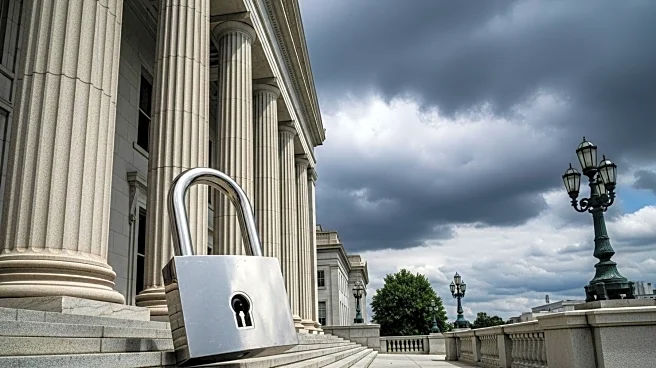What is the story about?
What's Happening?
The U.S. government has officially begun a shutdown after Congress failed to reach an agreement on a funding bill before the fiscal year deadline. The shutdown affects a wide range of government services and could have significant economic repercussions. Republicans proposed a stopgap measure to keep the government running until November 21, but Democrats withheld support, demanding the inclusion of provisions to address Medicaid cuts and extend health insurance subsidies. The White House has threatened permanent layoffs of government workers, adding to the tension between the parties.
Why It's Important?
The shutdown underscores the deep political divisions in Washington, with both parties blaming each other for the impasse. The potential for permanent layoffs and the disruption of government services could have far-reaching effects on federal employees and the public. The shutdown also highlights the challenges of governance in a polarized political environment, where compromise is increasingly difficult to achieve. The economic impact could be significant if the shutdown is prolonged, affecting everything from national parks to federal employee paychecks.
What's Next?
Congressional leaders are expected to continue negotiations, but with both sides entrenched in their positions, a quick resolution seems unlikely. The White House's threat of permanent layoffs could escalate tensions further, potentially leading to legal challenges from federal employee unions. The public and businesses may begin to feel the effects of the shutdown as it continues, increasing pressure on lawmakers to find a solution.
AI Generated Content
Do you find this article useful?















